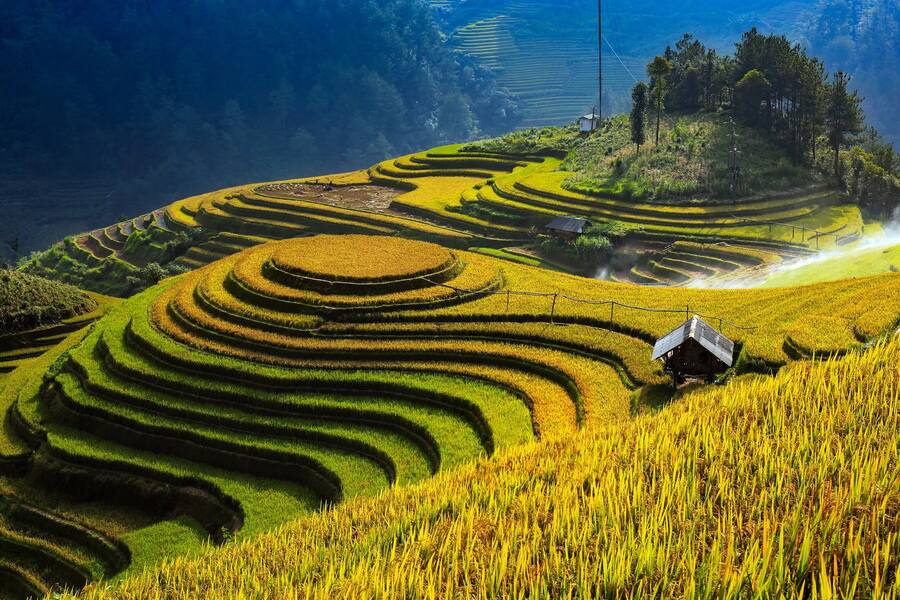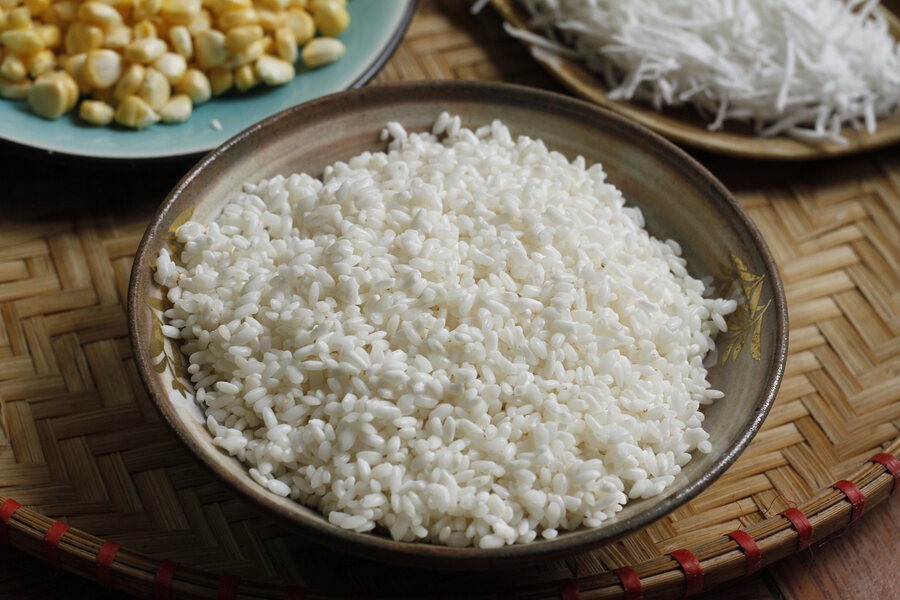Yen Bai

Yen Bai Province is a hidden gem in the center of northwestern Vietnam. Far from the well-trodden tourist trails, this charming destination invites travelers to immerse themselves in step-by-step terraced fields.

You can find Vietnam's most beautiful terraced rice fields in Mu Cang Chai. Photo: Giao Thong Newspapers
But the province is more than just a visual feast; it's a tapestry woven with the rich cultural heritage of many ethnic minorities. Every people has unique customs, crafts, and culinary delights. Asia King Travel gladly introduces you to Yen Bai in the following article.
The province has long been a part of Vietnam, with a majority population of ethnic minorities. In 1900, the French colonialists established Yen Bai Province. The ethnic groups in the province organized non-cooperation movements against the French, leading to numerous small uprisings throughout Tran Yen, Van Chan, and other regions.
.jpg)
Yen Bai people repaired Lung Lo Pass during Dien Bien Phu Campaign. Photo: VOV
After Vietnam's reunification in 1975, the province merged with Lao Cai and Nghia Lo to form Hoang Lien Son Province. In 1991, these provinces were separated again. In 2002, Yen Bai Town was upgraded to become the provincial capital. Currently, the province spans 6,900 square kilometers and has a population of nearly 850,000 people.
Yen Bai Province is surrounded by other provinces in Northwestern Vietnam. It’s the only province without foreign borders. Geographically, the terrain is predominantly mountainous, with rugged peaks, deep valleys, and lush forests.
.jpg)
Chi pau flowers bloom on Ta Chi Nhi Mountain. Photo: Vietnamnet
The province is between Hanoi and Sapa, approximately 200 kilometers from the capital. It's another 170 kilometers on the highway to reach Sapa town.
The road from Hanoi to Yen Bai is probably the most convenient option. It's about a 4-hour via Hanoi - Lao Cai Expressway. The journey will bring you through gorgeous mountain scenery. Buses run frequently between Hanoi and Yen Bai, but the ride can take 5-6 hours depending on traffic. Either way, having some snacks and entertainment for the journey is a must.

Yen Bai City thrives amidst mountains and forests. Photo: Vietnamnet
The roads are pretty decent, but be prepared for some serious mountain hairpin turns. Having a decent rider with you is highly recommended. The train is an alternative option, but may not be as convenient as the road.
Yen Bai's climate is characterized by distinct seasons, ranging from cool and misty winters to hot and humid summers. The province experiences a subtropical climate, with temperatures averaging around 20°C. The rainy season typically falls between May and September, bringing refreshing showers that nourish the region's abundant vegetation.

The best time to visit is at the beginning and end of the year. Photo: Lao dong Newspapers
From September to November, Yen Bai has cool temperatures and clear skies. It’s the best for outdoor adventures. Trekkers can explore the region's scenic mountains and valleys without battling the sweltering heat. This period also coincides with the rice harvest, painting the countryside in shades of golden yellow.
The second peak season is between March and May when spring bears new life into the landscapes. Temperatures are pleasantly warm. The hills come alive with blooming flowers and boundless green. It's a photographer's paradise!
You've got options galore to suit every budget and travel style. The province boasts some top-notch resorts and high-end hotels that promise an indulgent stay. Muong Thanh Luxury Yen Bai Hotel is a standout choice. It offers impeccable service, plush rooms, and amenities fit for royalty.
If you're a mid-range traveler, don’t worry – the province has plenty of comfortable, well-appointed hotels that won't break the bank. For budget-conscious wanderers, there are countless guesthouses. These no-frills accommodations might be light on fancy amenities, but they more than make up for it with their unbeatable prices and friendly, welcoming vibes.
Suggested for you: Northwest Vietnam Trekking Tour 5 days: Hoang Lien Son National Park
Tu Le sticky rice is one of the best in Vietnam. Known for its plump grains, rich aroma, and sweet flavor, this sticky rice is perfect for making desserts, cakes, or even brewing rice wine.

Tu Le sticky rice is jade white and has a distinctive aroma. Photo: Quoc Huy Food
You can find authentic Tu Le sticky rice all over Yen Bai Province, but for the real deal, head to Tu Le Village itself. Besides sticky rice, Tu Le green rice is an interesting type of snack you can find outside Hanoi.
H'mong people only pick leaves from ancient Shan tea trees growing at 1400 meters high to create this premium tea. The tea buds and leaves are large and dark green. The young tea buds, covered in a white, snow-like down are handcrafted by skilled artisans.

H'mong people pick tea leaves from ancient Shan tea trees. Photo: People and Development
When brewed, Suoi Giang green tea offers a refreshing and slightly sweet flavor with subtle vegetal notes. Its smooth, well-rounded taste is complemented by a lingering aftertaste. The tea contains a high concentration of antioxidants and potential health benefits.
Yen Bai people use fragrant firewood to make Chinese sausage even more delicious. Made from pork marinated with rich spices, the sausage resembles a hot dog but has a sweeter and fattier taste.

Chinese sausages taste best when eaten with rice or as a snack with beer. Photo: Vietnamnet
Yen Bai is an off-the-beaten-path gem that offers a refreshing escape from the hustle and bustle of major cities. It should be on your Vietnam itinerary. So contact Asia King Travel and get ready to fall in love with this hidden treasure in the northern highlands.
Suggested for you: Mu Cang Chai Tour 3 days: A Mesmerizing Escape
The Mu Cang Chai Trekking Tour 4 Days offers an immersive adventure through nort...
Experience an adventurous journey to Ta Chi Nhu Trekking Tour 2-Day: Conquer the...
Explore Ta Chi Nhu, one of Vietnam’s highest peaks, with this 3-day trekking adv...
The Thac Ba Tour 2 Days: Vu Linh Ecolodge & Cultural Discovery offers an immersi...